General Description of the animal
One of the district features that separate soft corals from other anthozoans are that they have 8-fold symmetry of the polyps instead of 6-fold symmetry like other hard corals. Another distinguishing features is the lack of calcium carbonate skeleton. Their fleshy features that are supported by sclerites are what give their name, Sarcophyton, which means fleshy creature or animal. They are very leathery with a inflexible flesh-like body, similar to mushrooms. There are many lobbed folds, which lead to a sink in the center giving a funnel shape (pic 1).
 |
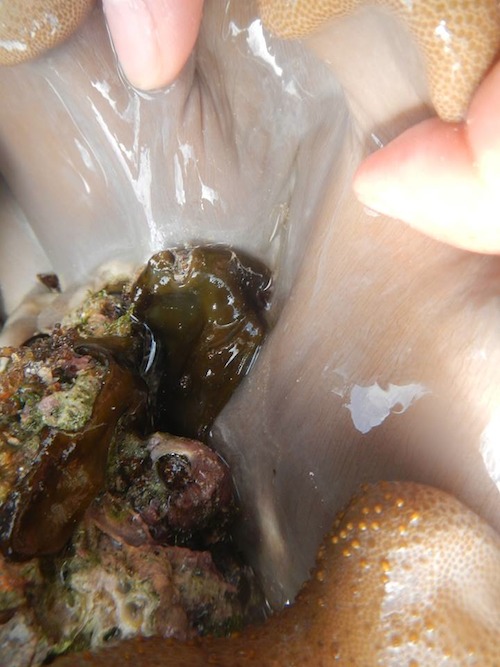 |
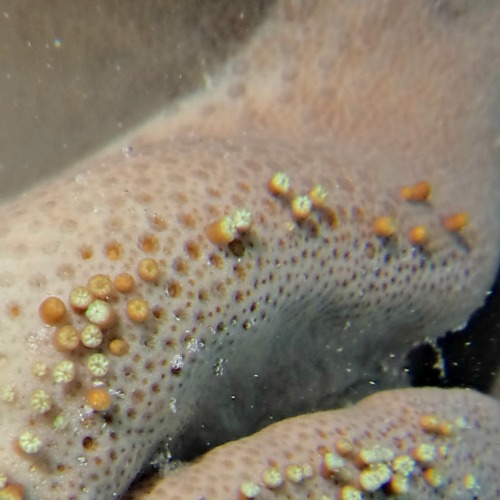 |
Pic 1 Leather coral with lobbed
folds. (A) shows an accumulation
of sand due to the sink created
by the shape of the coral |
Pic 2 The side of the leather coral
which show a smooth leather
where no polyp or pore covers
the surface. |
Pic 3 Polyps emerging from
individual pore located on the
capitulum.
|
The sides of the lobbed funnel and stalk contains no pores (pic 2); leathery texture still continues but is much smoother, probably due to the reduction of sclerites. Their surface called capitulum contains many pores. In each individual pores, contains a polyp that resides. During right conditions, the polyp pushes past the pore and stretches out (pic 3).
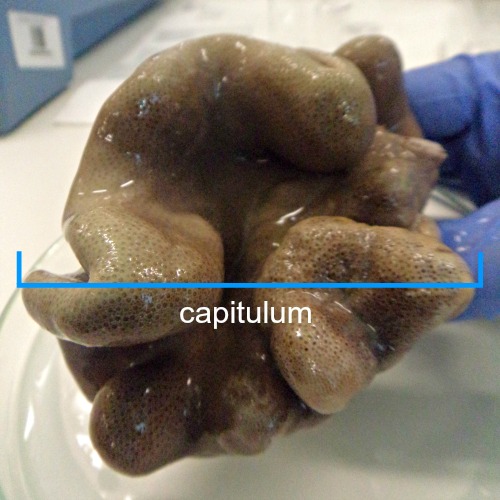 |
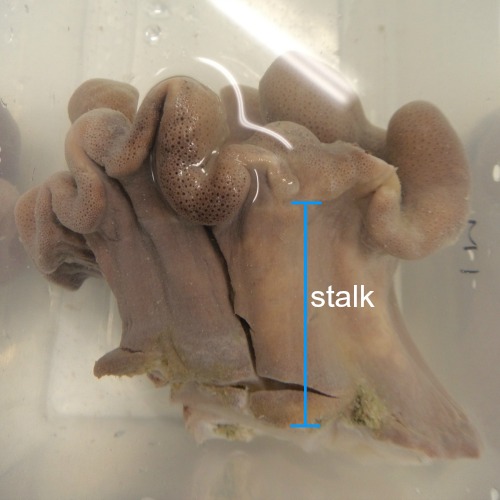 |
Pic 4 The capitulum of Sarcophyton ehrenbergi.
Capitulum includes the lobbed folds where pore
for polyps can be found. |
Pic 5 The stalk of Sarcophyton ehrenbergi. Stalk
length can vary depending of the environment
type the coral has grew up in. |
Colonies of Sarcophyton ehrenbergi found do not look identical to those that are found right next to each other due to the random folding that is created. Also, a colony found in one location can sometimes look very different from another, due to the environmental factors that the colony has survived in. Stalk height would vary depending on current strength as well as sea level.
Description of the polyps
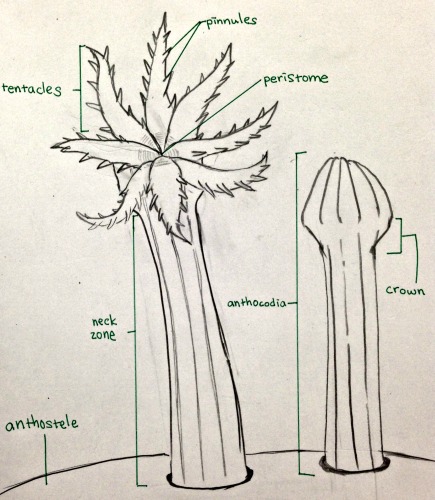
Pic 6 Illustration with anatomical taxonomy labelling of a single polyp
comparing with exposed and closed tentacles.
As mentioned above, Sarcophyton ehrenbergi’s polyps have 8-fold symmetry, thus grouped in the sub-class of Octocorallia. Their 8-fold symmetry on the top of the polyps are tentacles, that are used in feeding. Each tentacle has a number of pinnules. In the middle of the 8 tentacles is the peristome, where food particles are guided. Extension of the tentacle can vary during the day, depending if capturing food particles are necessary aside from photosynthesising. One feature unique compared to most soft corals is the long extension of the polyp; giving a very long neck zone. Length of the polyp may vary.
 |
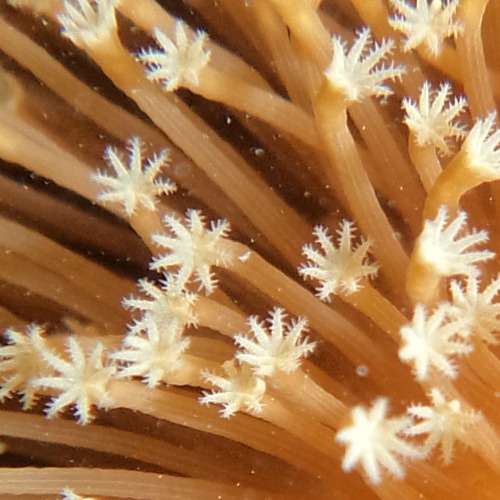 |
| Pic 7 Fully extended polyps during the night. |
Pic 8 Tentacles are fully open with visible pinnules.
Tentacles are fully extended for capturing food
particles in the water column. |
From observation, during the day at hottest temperatures, polyps were fully retracted into the fleshy body called theanthostele. On cooler days but sunny, extension of the polyps, also known as anthocodia, can be seen but tentacles are closed, exposing the crown where much zooxanthelae were found. During the night, extension of the tentacles can be seen, as well as the pinnules.
 |
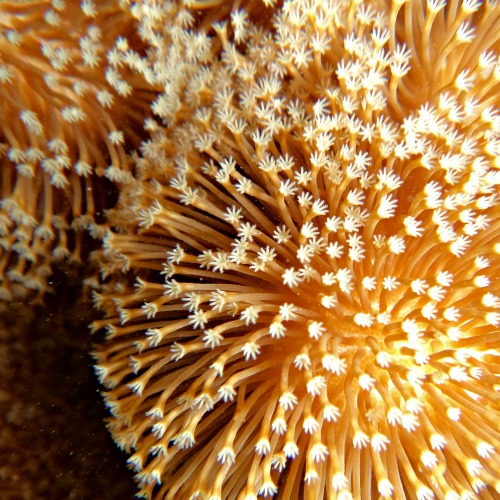 |
Pic 9 Extended polyps during the day,
however tentacles are closed |
Pic 10 Extended polyps with extended tentacles |
|